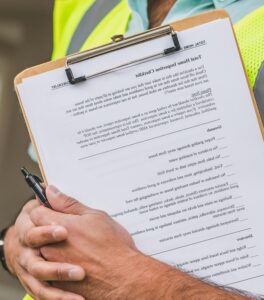Here are ten types of homes you can buy if you’re thinking about buying a home. Please note you may notice some overlap but these ten types of homes are distinguished by style and name. Here we go.
10. We have the studio apartment. Sometimes sold as a studio condo and generally purchased but many times these apartments are rented. Studio apartments can be within apartment complexes or built into existing homes.
9. The condominium. The condo is a very similar to an apartment in that you live in units within a building complex but you end up owning the condo once you’ve finished paying your mortgage. Condo life is much different than typical apartment renting as you have extra fees to consider like maintenance.
8. Then there’s the townhouse. The townhouse can also be rented like a studio apartment but it can be purchased as well. Townhouses (or town-homes) are usually built within a complex of townhouses and are attached to one another. There can be 3 to even 50 homes in one block. Town-homes share the same monthly expenses that condo dwellers share in monthly maintenance costs and other miscellaneous ones.
7. The cottage. The cottage is a great home to buy albeit generally mostly for vacation purposes. You can rent cottages or set up time-shares but most times cottages are purchased and lived in during certain times of the year.
Some cottages are well equipped to act as full-time living quarters but if you do want to live the cottage live full-time you’ll have to get used to living with strong weather conditions as cottages are built on cities or urban areas but are built in rural areas where the weather can get quite harsh.
6. We all know the bungalow. The bungalow can be a single or semi-detached one floor home. Everyone in the home, all rooms, bathrooms, closets and doors are all on the same floor. These days many bungalows come in two styles, some with basements and some without. Large bungalow homes are great for people who don’t want to venture up and down stairs all the time and are usually purchased by older people who have mobility issues.

5. The Log home or cabin. Almost anywhere in Ontario one can find and purchase a log home. Log homes are great especially if you’re the kind of person/family that loves and wants to live in the great outdoors. Some log homes can be quite primitive but with a lot of work and dedication, they can be fixed up to provide all the luxuries we’re used to like running water, heat and electricity.
Like the cottage home, log homes are usually found in rural parts of the province and are tucked away enough to give their owners the privacy they need. Log homes are sturdy with thick walls and contrary to what they look like from the outside, they can be renovated quite beautifully on the inside.
4. The semi-detached home. The semi-detached home is the complete opposite of the townhouse and/or condominium. The reason it’s called semi-detached is because it’s only attached to one other home rather than a set of homes on both sides. Semi-detached homes can be as large or small as single homes and besides being connected to another home there virtually is no different between the two. Like condos, townhouses or apartments, the one issue many home owners have with semi-detached homes is the fact that your neighbours can hear your loud talking, kids screaming or your bashing parties/loud music.
Some areas only have semi-detached homes and so for people who are determined to live in a particular part of town, the semi-detached home may be their only option.
3. The Single-family detached home. If you want to live in a semi-private home, with your own land, water system, electrical system and so forth, you’re going to want to opt in for the single-family detached home. The Single-family detached home is the typical home you can see across Ontario. Depending on where you live, this kind of house can be found in big cities, urban settings or even in rural pars of the province. The Single-family detached home is the most popular home because it gives home owners the privacy they’re looking for and a sense of autonomy.
A study done in 2006 by census Canada stated that over 50% of the population in Canada live in a single-detached homes. The one apparent disadvantage of living in a single family home is that all maintenance and repair costs fall on the home owner (compared to condo or semi-detached homes), but to most that type of arrangement is worth it as being in total control of your own home is what most people are looking for in general.
2. Meet the Terraced house. The terraced home is much like townhouse living as they are usually attached to one another. They do stand out from townhouses in many ways, but are usually found in downtown city cores. Although they are similar to townhouse living they’re actually built according to a particular style that became popular across Europe in the 1600’s. The main difference being their style, one can easily tell them apart from regular townhouses and they’re much more popular because they are usually built with style in mind. The one drawback to terraced homes is that they can each have several owners living on each floor so the privacy options go right out the window.
The first and last home in a terraced dwelling is called the end terrace and is usually built a little different than the rest of the homes in it’s unit rows.
1. The farm house. This type of home is self-explanatory. The farm house is a home of any kind (but always detached and a single family type home) that is located anywhere on or near farm land. When one purchases a farm house, they usually end up owning a nearby barn or work shop. Farm house properties are usually much bigger than homes in urban settings, and can accommodate livestock like horses, chickens, sheep and swine. Farm home properties can also accommodate growing large gardens of fruits and vegetables which can be sold to the public.
The farm home encompasses all the benefits of living in areas where you’d find cottages and log cabins. They’re also usually quite established so finding a farm house with running water, electricity is usually easy to find.
So if you’re looking for a home and aren’t sure what kind you’d like to purchase, the above list should be good enough to give you a rough idea as to the types of homes someone in Ontario can purchase but you’ll want to ensure you speak to your local real estate agent for a. more detailed information about the home you choose, and what you can expect as each home is definitely different despite what kind of home it’s labelled as.
If you enjoyed reading this article and found it useful, feel free to share it.






Be First to Comment